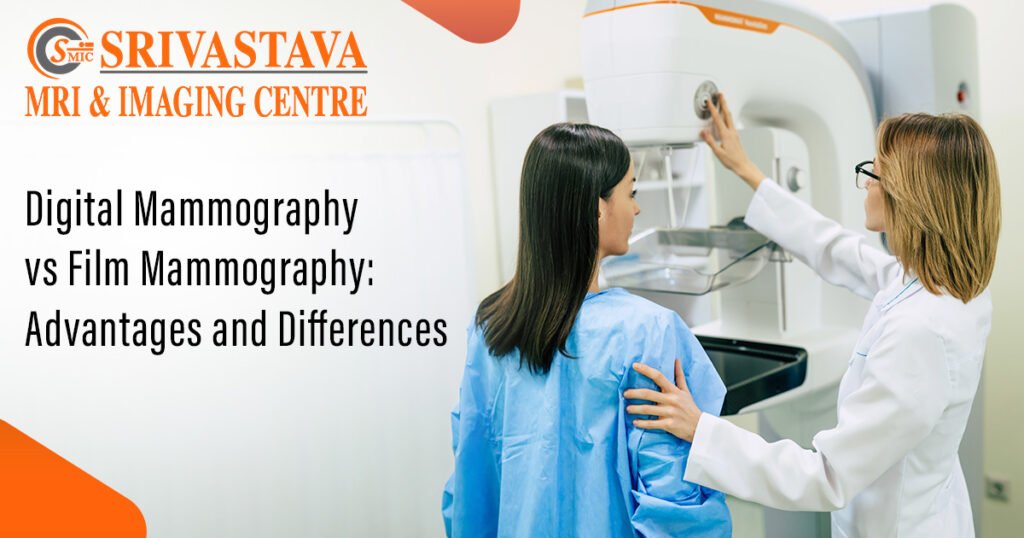The evolution from film mammography to digital mammography has revolutionized the landscape of detection and diagnosis. As technology advances, so do our methods for detecting breast abnormalities, and enhancing accuracy, efficiency, and patient comfort. Let’s delve into the advantages and differences between digital mammography and its predecessor, film mammography.
Film mammography, the traditional method, has served as the cornerstone of breast cancer screening for decades. It involves capturing X-ray images of the breast on photographic film. However, the transition to digital mammography has marked a significant paradigm shift in breast imaging.
Digital mammography employs detectors to convert X-ray energy into digital images, which are displayed on high-resolution monitors. One of the most notable advantages of digital mammography lies in its superior image quality. The digital format allows for enhanced contrast and manipulation, facilitating a more detailed analysis of breast tissue.
Moreover, digital mammography offers a host of practical benefits over film mammography. It enables radiologists to adjust brightness and contrast, thereby optimizing image clarity and reducing the need for retakes. Additionally, digital images can be stored electronically, promoting efficient retrieval and transmission for further analysis or consultation.
Another pivotal advantage of digital mammography is its superior sensitivity in detecting breast abnormalities, particularly in women with dense breast tissue. Digital technology allows for magnification and zooming, enabling radiologists to pinpoint subtle abnormalities that may evade detection in conventional film mammography.
Furthermore, digital mammography facilitates computer-aided detection (CAD) systems, which utilize algorithms to flag suspicious areas for further review. This augmentation in detection capabilities enhances the overall accuracy of breast cancer screening, potentially leading to earlier detection and improved outcomes.
Despite the myriad benefits of digital mammography, it is essential to acknowledge its limitations and challenges. The initial capital investment for digital mammography systems can be substantial, posing financial barriers for some healthcare facilities. Moreover, the transition from film to digital mammography necessitates training and proficiency in new technologies, which may entail a learning curve for radiologists and technologists.
In contrast, film mammography, while considered the gold standard for many years, is gradually being phased out in favor of digital technology. Film mammography lacks the flexibility and efficiency afforded by digital systems, often resulting in longer processing times and increased patient discomfort.
In conclusion, the advent of digital mammography heralds a new era in breast imaging, offering unparalleled advantages in image quality, sensitivity, and efficiency. As technology continues to evolve, the integration of digital mammography into routine breast cancer screening holds immense promise for improving early detection and patient outcomes.
As patients, it is imperative to stay informed about advancements in breast health diagnostics and seek reputable facilities equipped with state-of-the-art technology, such as the Ultrasound Centre in Mayur Vihar and Srivastava MRI & Imaging Centre, to ensure the highest standard of care and accuracy in breast cancer screening.

